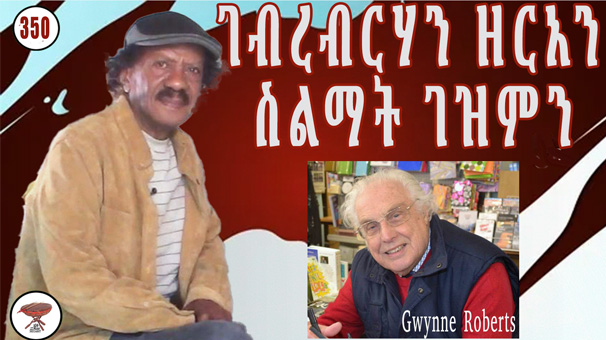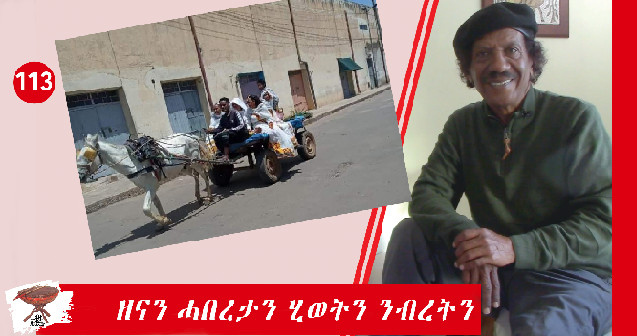Gebreberhan Zere and Dowry Jewelry
The late Abdulkadir Ramadan and Tesfay Tekle were conducting TekhliT (dagmay srrE) around Himberti when Tesfay caught my little trick to be assigned to Kebesa. His sharp warning left no room for negotiation. Worse still, my stay in Kebessa was cut short by my dear friend, the late Gebreberhan Zere, who was kidnapped and presumably killed by the PFDJ near Humera before the Ethiopian–Eritrean border war—a war unresolved even after twenty-five years, though it devoured over a hundred thousand lives and displaced countless others.
My days in Kebessa were numbered. The security office received a message from my commander, Ibrahim Ali Nur, instructing him to “send Saleh back to his assigned place immediately.” But I didn’t want to leave the glory of struggling in Kebessa! I hesitated. Then I heard Abdulkadir Ramadan and Tesfay Tekle were in the area conducting a major TekhliT—a troop regrouping exercise. Determined to stay, I planned to blend with the hundreds of young combatants gathering around Himberti and be reassigned permanently in the “glory zone.”
I sneaked into the chaotic assembly and lined up. Tesfay, who knew me from the 2nd Congress, spotted me. “What are you doing here? This is not your unit!” he said. My attempt to talk my way out failed. I offered a weak excuse: “I want to be reassigned with everyone here; I want to stay here.” His voice snapped like a whip. “Fawda! Anarchy! You can’t transfer at will—go back to your unit. Now!”
I managed to linger in the area a little longer until I ran into my friend, the late Gebreberhan Zere, then Director of Security in Hamassen. He was later killed in Tigray around the same time as Zekarias Negusse—who had left the USA to join the struggle. Zekarias was assassinated with a silencer gun in Dessie. It was the late nineties, and the EPLF was liquidating ELF cadres in Sudan and Ethiopia.
I had known Gebreberhan since the 2nd Congress, and we had become friends. We met several times in Hamassen, and I was overjoyed to see him again. But this time, he was looking for me. When we finally met, we greeted with shoulder bumps and exchanged jokes before his tone switched to a stern voice. His eyes locked on mine, his lips trying to suppress a smile: “Listen, Abu Salah,” he said quietly, “I have orders to arrest and send you back. Do you want me to do that, or will you make the right decision yourself? Don’t embarrass me.”
His mock seriousness made me laugh. “Arrest!” I was worried but didn’t let him see that.
I realized my game was over. My trick to stay in Kebessa had been exposed, and it wouldn’t work again. I didn’t want to be accused of insubordination. “No, Gere, I’ll leave on my own.”
Gebreberhan hosted me in his camp as a guest, not a prisoner. I planned to leave Hamassen the next morning.
The following day, I set out on the long trek to report to my unit. Near Meqerka, rain started pouring. I saw a few combatants standing outside a house and approached them for shelter. The nervous guards refused me entry—something important was going on inside. But as the rain grew heavier, we forced our way in.
Inside sat the late Hamid Mahmoud, a member of the military staff of the ELF; the late Gebray Tewelde, the director of the region; and Yassin, the regional military office director. They were having an interview with three European journalists and a young translator, a combatant.
Interjection
By now, you may have noticed that most of the names I mention are no more alive—and it pains me deeply. We lost so many comrades while the PFDJ leadership worked to erase the ELF legacy and rebrand it as its own. The history of the ELF was nearly wiped from our collective memory. The PFDJ chose to build a nation on one leg, without a unified national historical narrative—and the result today speaks for itself.
Lost in Translation
The reporters were Nicholas Downey, a British TV journalist known for covering the Kurdish rebellion in the 1970s; Gwynne Roberts of The Financial Times; and Jerome, a Frenchman covering for Paris Match. Jerome’s poor English forced him to rely on his camera more than his notebook.
The interpreter, a young combatant, spoke only Tigrinya, a little English, and no Arabic. Hamid spoke Tigrayit and Arabic; Gebray spoke Tigrinya and some broken Arabic and English; and Yassin managed Tigrinya and Arabic—I am not sure if he spoke other languages. You can imagine the chaos! Every question had to pass through three layers of translations before reaching the interviewee, then back again through another spin of twisted tongues—the result was like an endless loop of Chinese whispers. Poor Jerome often shouted, “Merde!” in frustration.
I resisted the urge to interfere until the mistranslations became unbearable. Though my English was basic, it was far better than the rest. As we say in Eritrea, “Ab Adi Ewurat, Hade Aynu Negus”—in the land of the blind, the one-eyed is king. Hamid must have liked my translation and noticed my discomfort; he gestured, “Taal hina (come here).” He offered me a seat beside him, and soon I became the de facto translator.
When the rain stopped, I prepared to leave, but Hamid prevented me from leaving: “Mashi wen? (Where are you going!)” He wasn’t ready to let me go. He quickly scribbled a note and dispatched a runner to deliver it to my commander, Ibrahim Ali Nur—tens of miles away, armed only with a village name as his road guide. It was like searching for a needle in a haystack, but somehow, it always worked. I knew—I had carried such letters myself many times. And I was lingering in the area after I came carrying letters; it gave me an excuse to linger a little longer.
Canberra Planes and Dowry Jewelry
We identified the bombers as Canberra—whether accurate or not, someone said it and the name stuck. Watching them glide above was terrifying.
Word reached the Ethiopian intelligence that three Ferenji (foreigners) were roaming the area. Soon, a Canberra bomber began scouring and attacking villages, devastating Adi WerHi Seb in one of its raids.
I joined the rescue efforts. Several homes were destroyed; miraculously, no one died. But one image seared itself into my memory. An old woman was frantically digging holes in the ground inside the burned hut, sobbing. A young bride had entrusted her with dowry jewelry that she buried beneath the floor. She dug and cried, digging more and crying harder, grieving not just the lost gold, but the loss of trust, memory, and meaning.
What Next…
Many people were captivated by the picture that inspired this series, and I will explain that once more. I will also tell how I found myself in Karneshim, the PLF stronghold where Jerome finally met a French-speaking fighter. It was there I met Ali Sayed and Petros Solomon—who shattered my heart when they said they told me they opposed the Khartoum unity meeting between ELF and PLF.
I hadn’t recovered from the shock when battle erupted unexpectedly with Ethiopian forces. In that fight, I met the late Dr. Eyob Gebreleul and the late Mohammed Said Barih; Barih was wounded, and I escaped with a slight injury.
The reporters decided to return to Sudan through PLF-held territories, and I had to cross the Asmara–Keren Road—the de facto border dividing ELF and PLF territories in Hamassen at the time.
I will tell you about that meeting and other stories in the next portion of Negarit.
Support Awate-Negarit 2026 Account details: https://awate.com/support-awate-negar…





Awate Forum